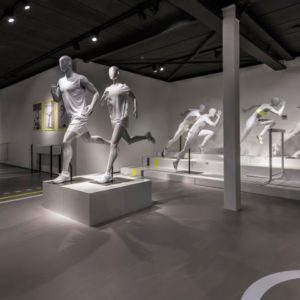


A bright red model of the Slovak National Gallery forms the centrepiece of the Czech and Slovak Pavilion, which questions whether the countries’ Soviet-era architecture should be saved or demolished. Entitled The Care for Architecture: Asking the Arché of Architecture to Dance, the Biennale exhibition questions whether buildings like the extension to the Slovak National Gallery in Bratislava can ever be disassociated from the political regime.

Designed by Slovak architect Vladimír Dedeček in the 1960s and built in the 1970s, the bridging gallery building is seen by many as a symbol of the country’s communist era, so plans for its renovation have been contentious. The three-dimensional model is raised on stilts to give a new perspective on the building, allowing visitors to get a sense of its arrangement of galleries, amphitheatres and courtyard.

The broad spectrum of opinion the building receives from both Slovakian nationals and foreigners is represented by a series of films, played on wall-mounted screens. Different screens offer opposing strategies for the renovation of the building, which has been in a state of disrepair for a decade. One set dubbed the “fight wall” is dedicated to material related to the architects original design and the fight to preserve it, while the other is named the “dance wall” and contains proposals for its rejuvenation.












